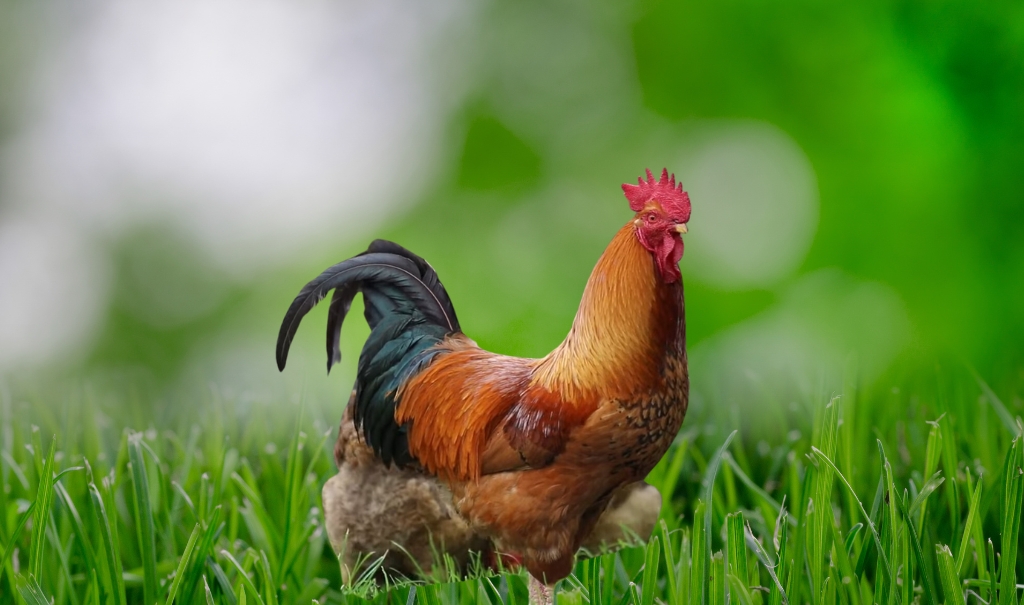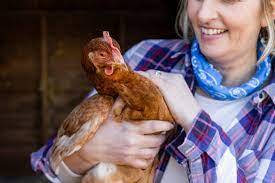The famous New Hampshire Red chicken breed is known for both its rich, reddish-brown feathers and its amazing egg-laying skills. This friendly, hardy bird has been around since the early 1900s. It lays more than 200 large brown eggs a year, which makes it perfect for backyard groups and small farms.

History
The breed started in New Hampshire, USA, early in the twentieth century. It was developed by Rhode Island Reds and other local birds to lay very good eggs and grow fast, and the birds should produce good and juicy meat.
Their current name, New Hampshire, came to fame when this standard, New Hampshire Red, was incorporated into the American Standard of Perfection in 1935. Then, in 1960, they named it the Bantam New Hampshire Red.
Physical Characteristics
There are certain physical traits that make this breed stand out. Their bodies are strong and compact, and their breasts are wide and deep. Their wings are also well-rounded. The feathers are a rich, glossy dark brown color. Bright red, single combs that are about the size of a pencil. The eyes are bright, bay, and alert. Their legs and feet are yellow or pinkish-yellow, and their beaks are yellow. Hens weigh 3 kg, and roosters weigh 3.9 kg. Men bantams weigh 1 kg, and women weigh 750 grams. Their nice and obedient behavior goes well with their good looks.
Temperament and Behavior
Many people like New Hampshire because they are friendly and easy to handle. They are easy to take care of, which makes them great for people who have never had chickens before or who have kids. They are usually calm birds that aren’t known to be mean.
How many eggs does a New Hampshire Red lay?
New Hampshire Reds lay a lot of eggs. Each year, they lay about 200 to 220 big brown eggs that weigh about 55 to 60 grams each. When they are 18 to 20 weeks old, they start laying eggs.
Meat Production
New Hampshire is valued for its ability to do two things well. They are great layers, grow quickly, and make a lot of good meat. This makes them perfect for small farmers who want to get the most out of their flocks.
You can taste the flavor of the New Hampshire meat. Because it grows quickly, it can be picked earlier, which makes the food more soft. It’s a popular choice for both home use and small-scale businesses because of this trait.
Caring of New Hampshire Reds
Dietary Needs
Like any other chicken, they require vitamins in their bodies to feed on and produce eggs. Coordination of their diets indicates that they will flourish if they are fed premium-quality chicken diets and pellets and occasionally forage for supplementary greens and treats. The health of these animals depends on how often they are provided with clean, potable water.
Ideal Living Conditions
Reds of the Granite State: These are tough birds that can survive even at very high, or very low temperatures. It does not matter if they live in free range or coop, however, they seem to be more comfortable when they have space to stretch. With this they should be able to avoid difficulty in breathing more so in the winter, and their living space has to have adequate ventilation.

Is New Hampshire Red broody?
People have noticed that New Hampshire Reds are a little broody, which means they like to sit on eggs and keep them warm. But they don’t lay as many eggs as some other breeds, so they can be used for both professional egg production and backyard flocks.
Advantages of Raising New Hampshire Reds
- High Egg Production: New Hampshire hens lay between 200 and 220 large brown eggs a year, which makes them a great choice for backyard flocks and professional egg production.
- Fast Growth Rate: These breeds grow up quickly. They lay their first eggs between 18 and 20 weeks of age when they weigh 3.9 kg for roosters and 3 kg for hens.
- Dual-Purpose Breed: New Hampshire is versatile for farmers and backyard fans because it can produce both eggs and meat.
- Cold Hardiness: This breed comes from New Hampshire and does well in cold conditions, making them a great choice for northern areas.
- Friendly Temperament: New Hampshire is known for being friendly and calm, which makes it easy to handle and add to backyard groups.
Differences Between New Hampshire Red and Rhode Island Red
However, New Hampshire Reds are usually lighter in color than Rhode Island Reds, even though they come from the same species. They also grow up faster, which makes them better for making meat.
Rhode Island Reds tend to lay more eggs than New Hampshire, but New Hampshire has a better mix of egg production and meat quality. This makes New Hampshire a better choice for people who want a breed that can do more than one thing.
Fun Facts About New Hampshire Reds
Unique Traits
Did you know New Hampshire is known for being great at finding food? They like to walk around and look for bugs and small plants, which saves their owners money on food.
Record-breaking Facts
Some New Hampshire have been known to lay eggs that weigh more than 70 grams! That’s pretty cool for a breed that can do two things well!
Final Words
A breed that fulfills every need is the New Hampshire. This breed offers it all, whether your goals are high-quality meat, prolific egg production, or just having a low-maintenance, amiable backyard companion. Farmers and backyard chicken aficionados alike love them for their flexibility, hardiness, and adaptability.
FAQs
How many eggs do New Hampshire Reds lay per year?
A New Hampshire hen can lay between 200-220 eggs annually, depending on care and conditions.
Are New Hampshire Reds good for meat production?
Yes, they are a dual-purpose breed known for both egg-laying and high-quality meat.
Does New Hampshire get along with other chickens?
They are generally docile and integrate well with other breeds in a flock.
What is the lifespan of a New Hampshire Red?
With proper care, New Hampshire can live up to 7-9 years.
Are New Hampshire Reds good for beginners?
Absolutely! Their friendly nature and low maintenance requirements make them ideal for first-time chicken owners.


